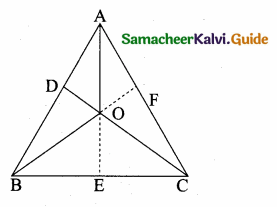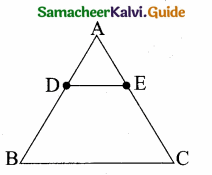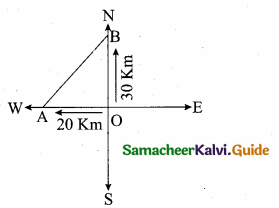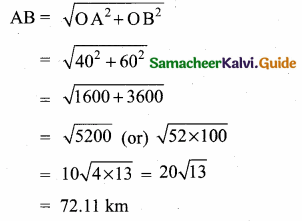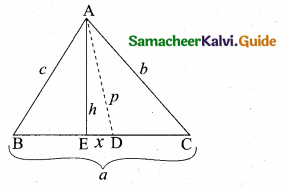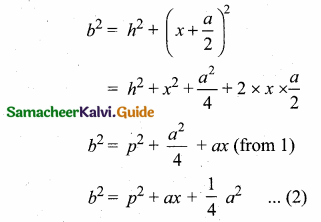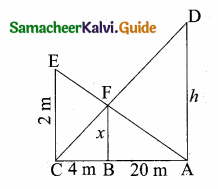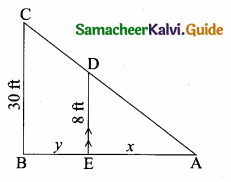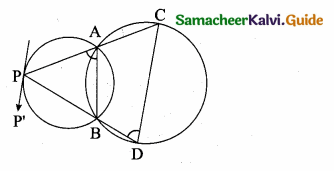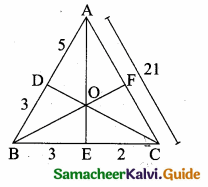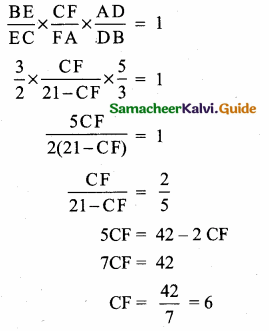Students can download Maths Chapter 3 Ratio and Proportion Ex 3.1 Questions and Answers, Notes, Samacheer Kalvi 6th Maths Guide Pdf helps you to revise the complete Tamilnadu State Board New Syllabus, helps students complete homework assignments and to score high marks in board exams.
Tamilnadu Samacheer Kalvi 6th Maths Solutions Term 1 Chapter 3 Ratio and Proportion Ex 3.1
Question 1.
Fill in the blanks.
(i) Ratio of ₹ 3 to ₹ 5 = ____
(ii) Ratio of 3 m to 200 cm = ______
(iii) Ratio of 5 km 400 m to 6 km = ____
(iv) Ratio of 75 paise to ₹ 2 = ____
Solution:
(i) 3 : 5
(ii) 3 : 2
Hint: 3m = 300 cm
(iii) 9 : 10
Hint: 5km 400 m = 5400m and 6 km = 6000 m
(iv) 3 : 8
Hint: ₹ 2 = 200 paise
![]()
Question 2.
Say whether the following statements are True or False.
(i) The ratio of 130 cm to 1 m is 13 : 10
(ii) One of the terms in a ratio cannot be 1
Solution:
(i) True
Hint: 1m = 100 cm
(ii) False
Question 3.
Find the simplified form of the following ratios.
(i) 15 : 20
(ii) 32 : 24
(iii) 7 : 15
(iv) 12 : 27
(v) 75 : 100
Solution:
(i) 15 : 20
= \(\frac{15}{20}\)
= \(\frac{3}{4}\)
= 3 : 4
![]()
(ii) 32 : 24
= \(\frac{32}{24}\)
= \(\frac{4}{3}\)
= 4 : 3
(iii) 7 : 15
(iv) 12 : 27
= \(\frac{12}{27}\)
= \(\frac{4}{9}\)
= 4 : 9
(v) 75 : 100
= \(\frac{75}{100}\)
= \(\frac{3}{4}\)
= 3 : 4
![]()
Question 4.
Akilan walks 10 km in an hour while Selvi walks 6 km in an hour. Find the simplest ratio of the distance covered by Akilan to that of Selvi.
Solution:
Ratio of the distance covered by Akilan to that of Selvi = 10 km : 6 km
= \(\frac{10}{6}\)
= \(\frac{5}{3}\)
= 5 : 3
Question 5.
The cost of parking a bicycle is Rs 5 and the cost of parking a scooter is Rs 15. Find the simplest ratio of the parking cost of a bicycle to that of a scooter.
Solution:
Ratio of the parking cost of a bicycle to that of a scooter = Rs 5 : Rs 15
= \(\frac{5}{15}\)
= \(\frac{1}{3}\)
= 1 : 3
![]()
Question 6.
Out of 50 students in a class, 30 are boys. Find the ratio of
(i) number of boys to the number of girls.
(ii) the number of girls to the total number of students.
(iii) the number of boys to the total number of students.
Solution:
Total no of students = 50
No of boys = 30
No of girls = 50 – 30 = 20
(i) Ratio of boys to girls = 30 : 20
= \(\frac{30}{20}\)
= \(\frac{3}{2}\)
= 3 : 2
(ii) Ratio of girls to the total number of students = 20 : 50
= \(\frac{20}{50}\)
= \(\frac{2}{5}\)
= 2 : 5
(iii) Ratio of boys to the total no of students = 30 : 50
= \(\frac{30}{50}\)
= \(\frac{3}{5}\)
= 3 : 5
![]()
Objective Type Questions
Question 7.
The ratio of ₹ 1 to 20 paise is _____
(a) 1 : 5
(b) 1 : 2
(c) 2 : 1
(d) 5 : 1
Solution:
(d) 5 : 1
Hint: ₹ 1 = 100 paise
Question 8.
The ratio of 1 m to 50 cm is
(a) 1 : 50
(b) 50 : 1
(c) 2 : 1
(d) 1 : 2
Solution:
(c) 2 : 1
![]()
Question 9.
The length and breadth of a window are 1 m and 70 cm respectively. The ratio of the length to the breadth is
a) 1 : 7
(b) 7 : 1
(c) 7 : 10
(d) 10 : 7
Solution:
(d) 10 : 7
Question 10.
The ratio of the number of sides of a triangle to the number of sides of a rectangle is
(a) 4 : 3
(b) 3 : 4
(c) 3 : 5
(d) 3 : 2
Solution:
(b) 3 : 4
![]()
Question 11.
If Azhagan is 50 years old and his son is 10 years old then the simplest ratio between the age of Azhagan to his son is
(a) 10 : 50
(b) 50 : 10
(c) 5 : 1
(d) 1 : 5
Solution:
(c) 5 : 1
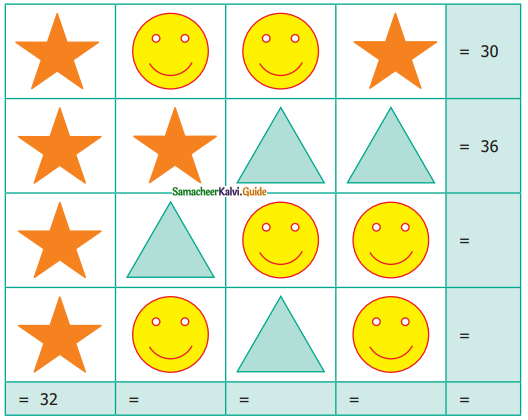





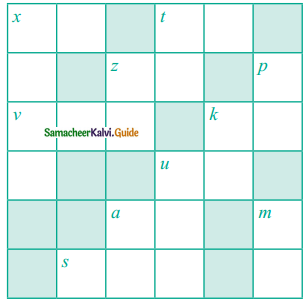
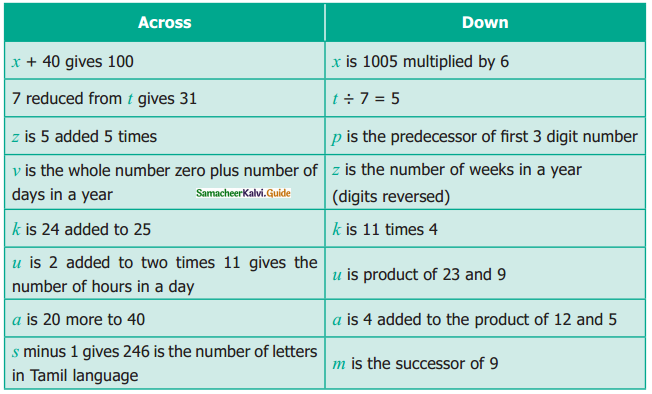
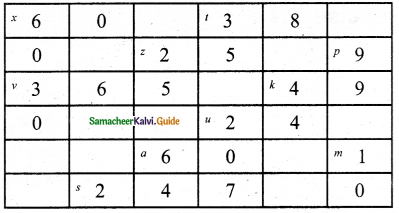
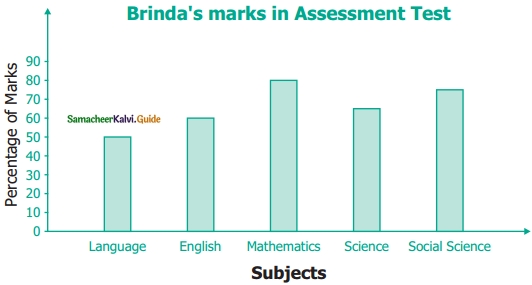

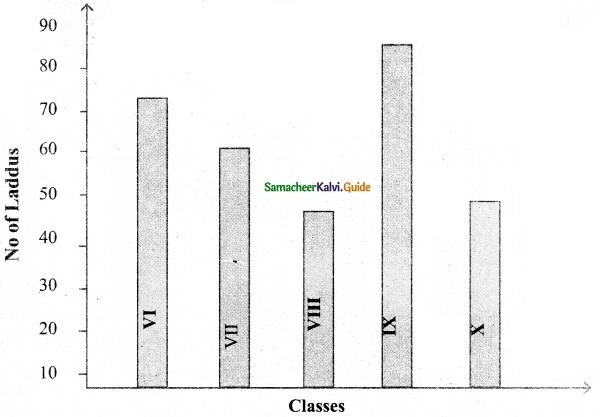

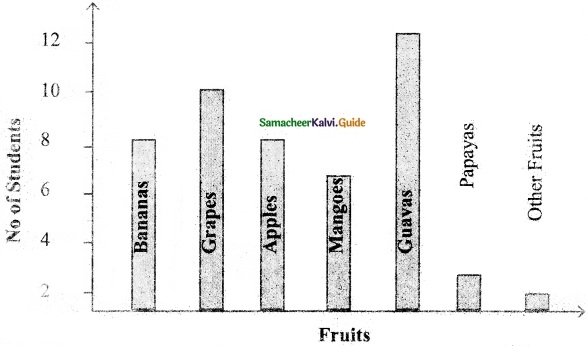
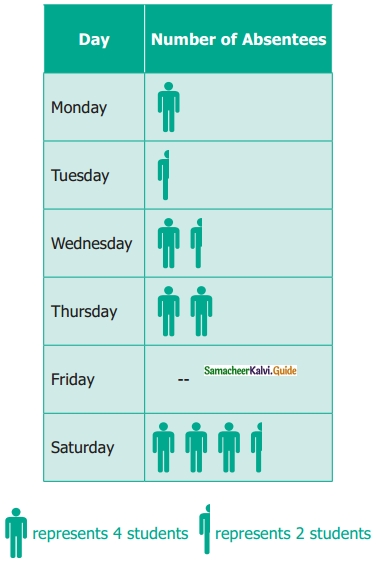
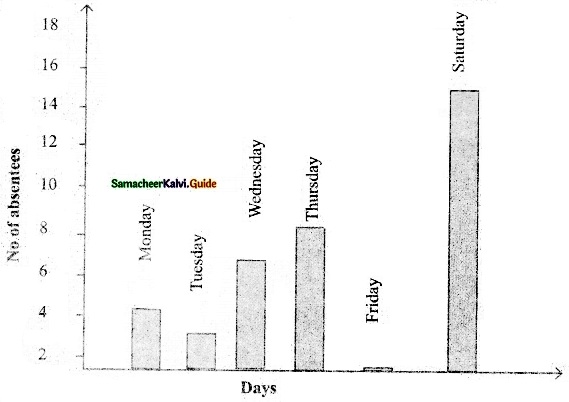


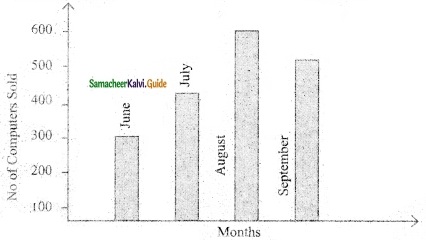

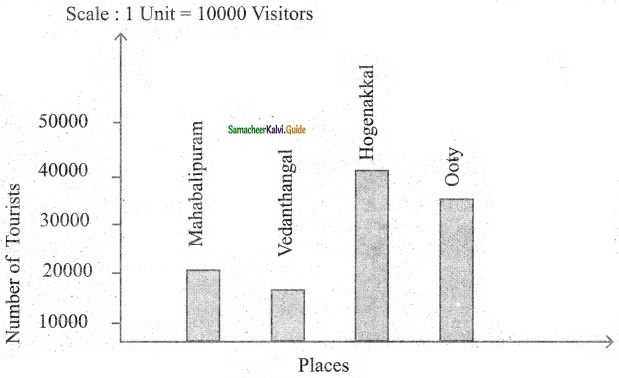
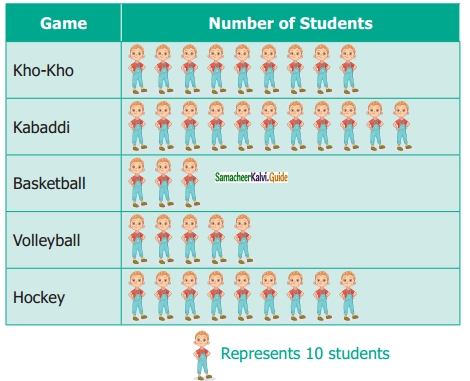
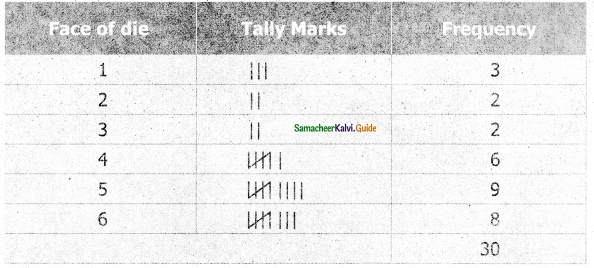
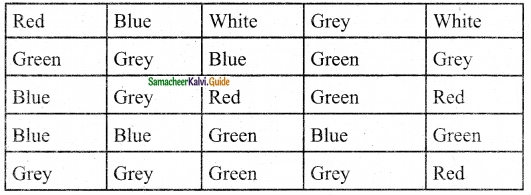
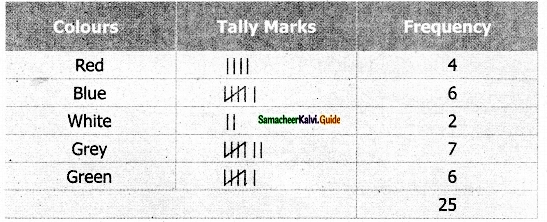

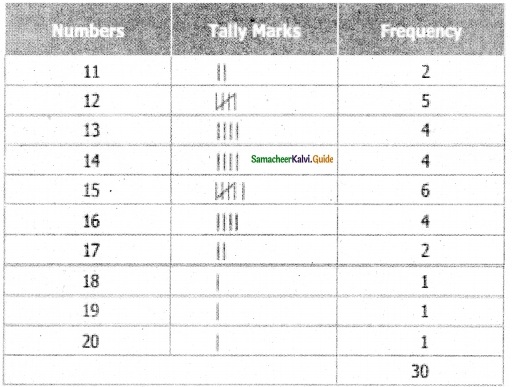
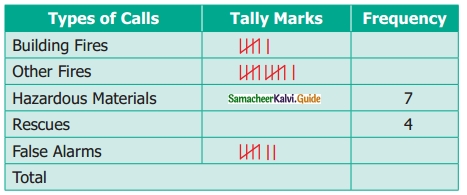
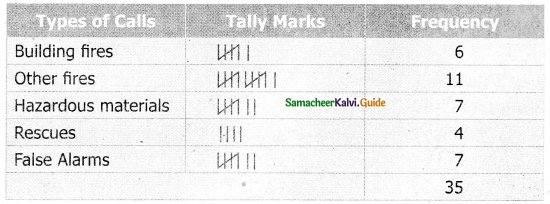
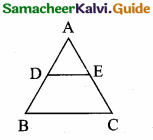
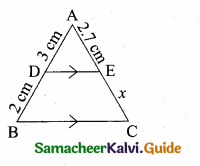
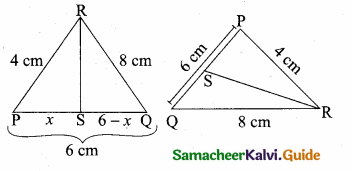
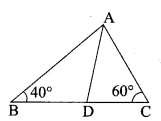
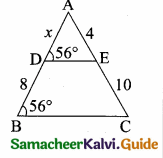
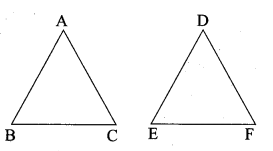
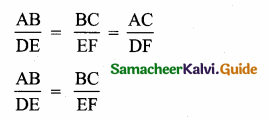
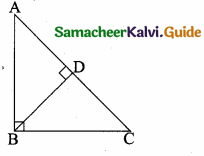
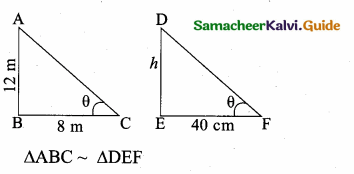
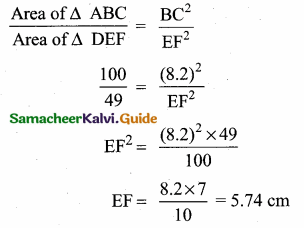
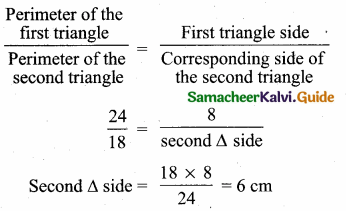

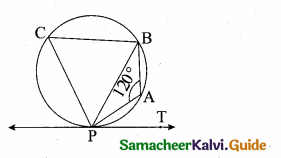
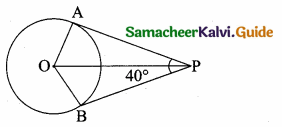
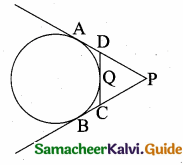
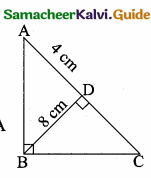
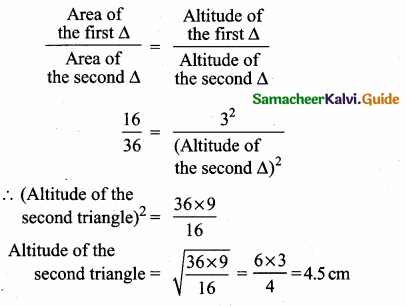
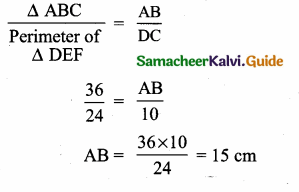
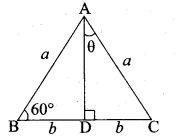
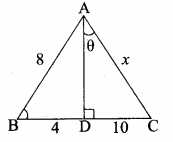
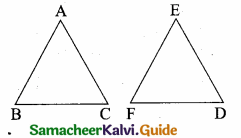
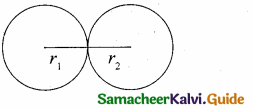
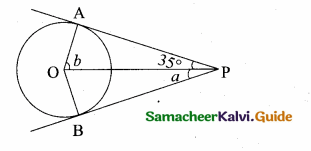
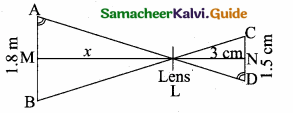
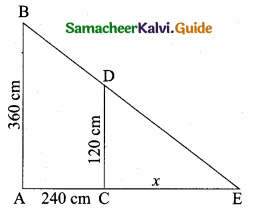
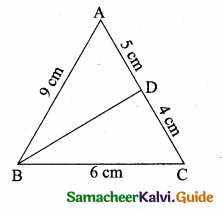


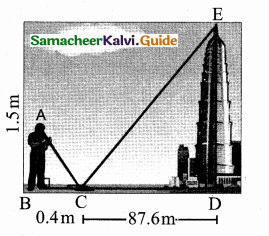
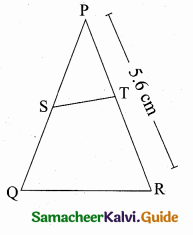
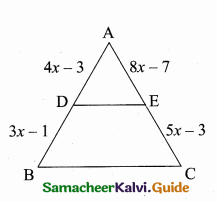
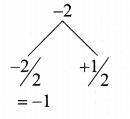
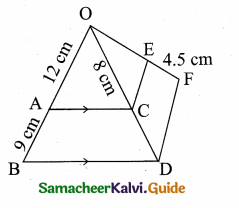
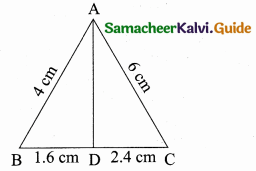
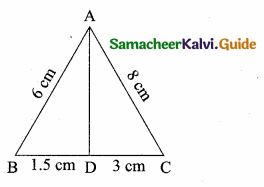
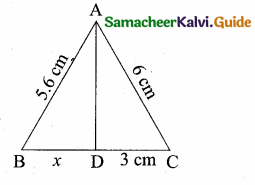
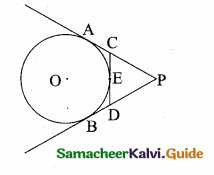
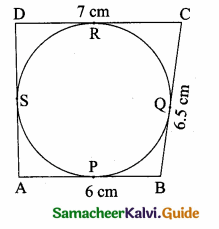
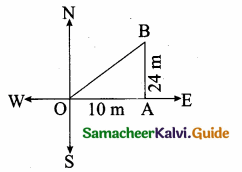
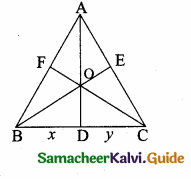
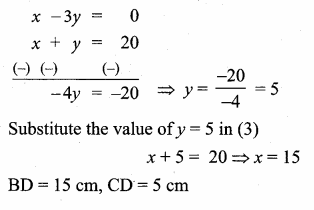
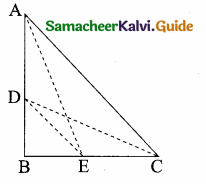
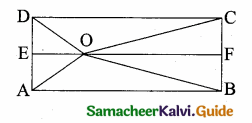
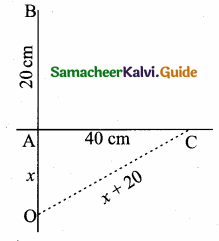

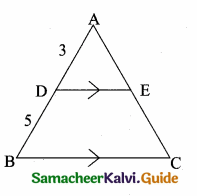
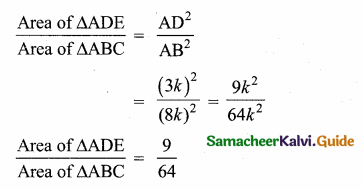

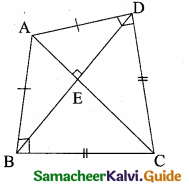
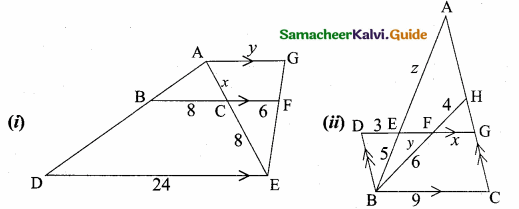
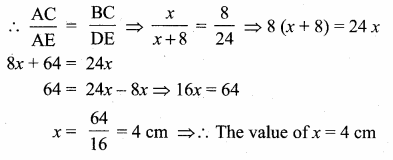
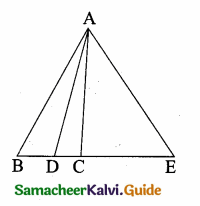
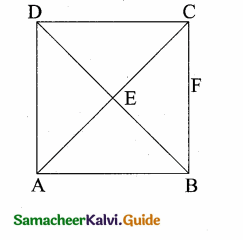
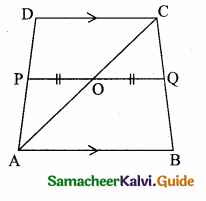
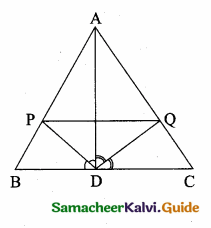
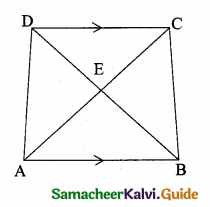
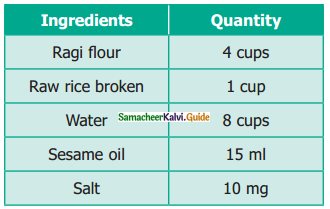

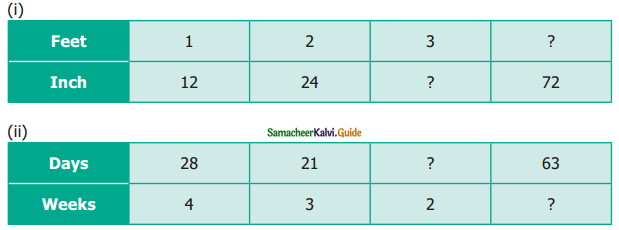
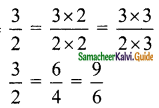
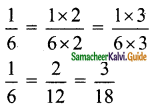
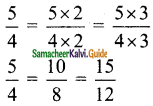
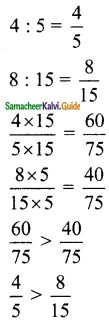
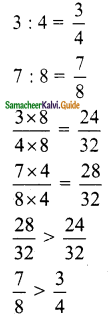
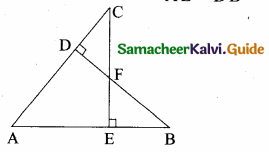
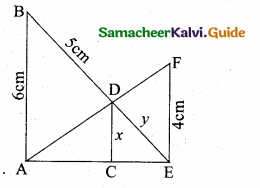
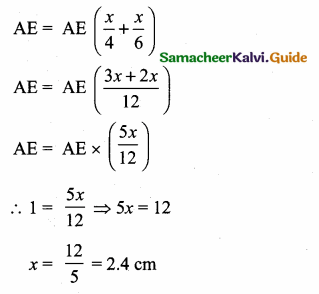 >
>